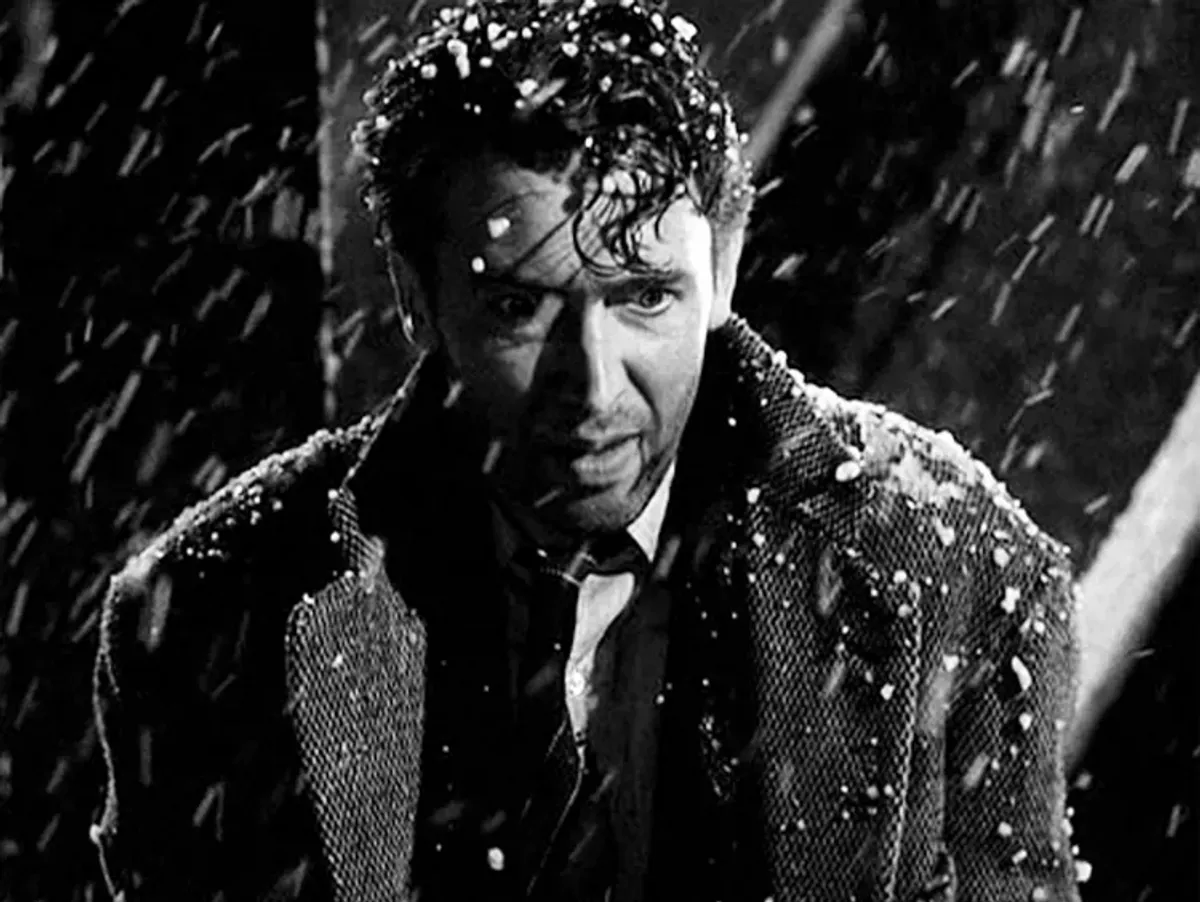
When It’s a Wonderful Life was released on December 20, 1946, it was way ahead of its time. While contemporary viewers may think of the movie as one of the darkest Christmas stories ever filmed, contemporaneous audiences found It’s a Wonderful Life to be sentimental and overly-optimistic when it was released about 14 months after the end of WWII. Despite mixed reviews and audience reactions, the movie received five Academy Award nominations including Best Picture, Best Director and Best Actor, and it won the Oscar’s Technical Achievement Award. The film’s copyright changed hands a number of times over the years, and an administrative error at National Telefilm Associates saw the copyright lapse and slip into the public domain in 1974. This allowed television programmers to add the movie to their schedules without paying expensive licensing fees, and by the 1980s It’s a Wonderful Life had become a classic holiday movie tradition in households across the country.
But It’s a Wonderful Life is more than a very good Christmas movie. It might be the greatest American film of all time. The very structure of It’s a Wonderful Life is unique and still surprising three quarters of a century after its release. Can you think of any other film that tells the entire story of a man’s life from his childhood to the establishment of his own young family before the last act takes a fantastic turn into an alternate reality that overthrows everything that came before it? Watching the film in 2021, it’s still a unique experience to follow the movie’s patient, detailed wind-up that completely illuminates the lives of the people in the little town of Bedford Falls, only to have the whole experience turned upside down once George finds his way to that lonely bridge.
Of course the performances in It’s a Wonderful Life are legendary. Jimmie Stewart has never been better than he is as George Bailey, the everyman dreamer who constantly defers his own goals and desires in order to do what’s best for his family and friends. Donna Reed gleams as Mary, George’s soulmate with the spunky can-do spirit. Lionel Barrymore is unforgettable as the mean old miser, Mr. Potter. This terrific trio at the center of the film is surrounded by an equally talented supporting cast, and it’s a hallmark of Frank Capra’s films that even incidental characters somehow feel fully-realized even if they’re given only a line or two of dialogue. Obviously, this movie would be completely different without Stewart or Reed or Barrymore, but I can’t imagine it without Gloria Grahame as Violet or Ward Bond as Bert the cop or Frank Faylen as Ernie the taxi driver.
It’s a Wonderful Life gives viewers a series of chapters that follow the major events in George’s life and reflect the real history of the first half of the 20th century in America. Capra and Stewart joined forces on the film after both had returned from service after World War II. Stewart served as a bomber pilot during the conflict and Capra made documentary films for the Army Signal Corps. It’s a Wonderful Life is a definitive post-war movie that’s colored by the experiences these men – and the country as a whole – endured during the conflict. It’s a Wonderful Life asks ‘Was all the sacrifice and the bloodshed to stop the tide of fascism worth it?’ The film’s answer is yes, America is still a moral place where moral people dedicated to their communities can make a difference. But it’s a dark, conflicted and complicated affirmation that acknowledges the bad deeds of bad actors and the everyday tragedies that will always mark the lives of mortal humans. Long before the great American film masterpieces of the 1970s, It’s a Wonderful Life gave us an existential story about the meaning we make and the communities we create when we choose to live selfless lives in service of others.
Hee-haw, and Merry Christmas to the Hive community!